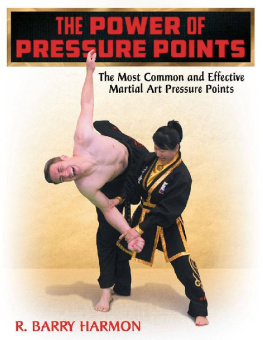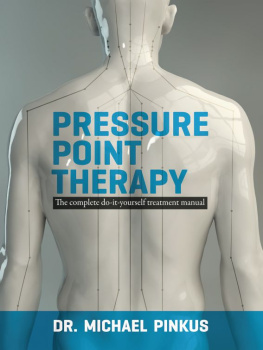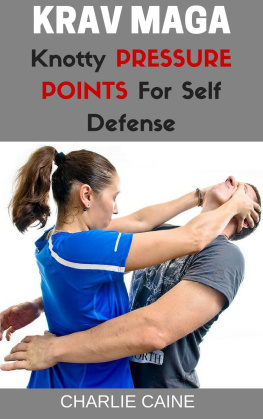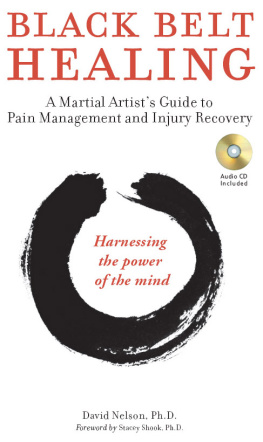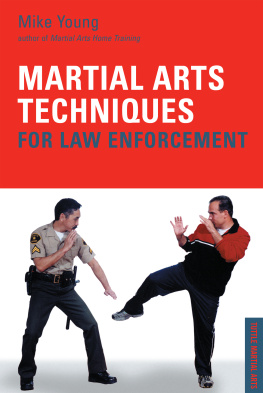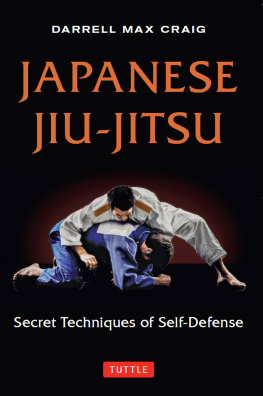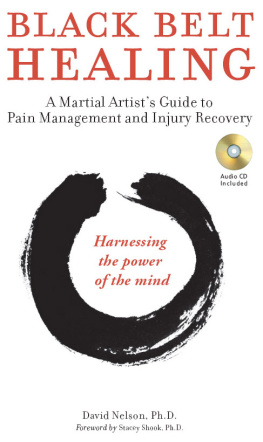
2016 R. Barry Harmon
All Rights Reserved.
No part of this publication may be reproduced, stored in a retrieval system, or transmitted, in any form or by any means, electronic, mechanical, photocopying, recording, or otherwise, without the written permission of the author.
First published by Dog Ear Publishing
4011 Vincennes Road
Indianapolis, IN 46268
www.dogearpublishing.net

ISBN: 978-145754-341-8
This book is printed on acid free paper.
Printed in the United States of America
CONTENTS
DISCLAIMER
This book is designed and intended to be used as an educational resource to inform the public about the dangers of using pressure points for striking and grabbing. The author, publisher, and all contributing parties do not take responsibility for any injuries, harm, or deaths resulting from anyone using the information in this book for any purpose other than educational purposes.
Pressure points for healing or martial art methods presented in this book are for academic purposes only and should not in any way be considered to take the place of a physician or a licensed medical professional or qualified martial art professional. Any injuries or illness, whether related to pressure points or any other reason, should be diagnosed and treated by a licensed physician.
A licensed physician should be consulted before engaging in any physical activity.
Never engage in martial art training without proper guidance and instruction from a qualified martial art teacher.
The information in this book is for educational purposes only.
DEDICATION
This book is dedicated to my mentor Grandmaster Suh, In Hyuk and my family who has supported me through all the ups and downs and the trials of life.

Kuk Sa Nim, In Hyuk Suh
Grandmaster In Hyuk Suhs proper title is Kuk Sa Nim. He has trained in Korean Martial Arts since early childhood. He coined the name Kuk Sool in 1958 and founded Kuk Sool Won (Association) in 1961. He is recognized by the Korean Government as a top authority on Korean traditional martial arts.
I am proud to say he is my mentor, and Im humbled by his incredible amount and depth of knowledge.
NOTE TO READERS
This Book introduces martial artists to the most effective and commonly used pressure points. R. Barry Harmon, License Acupuncturist, 9th Dahn Black Belt in the World Kuk Sool Association

Any mistakes in the research or information in this book is the total and complete responsibility of the writer. In no way should any contributors be held responsible for the writers opinions or mistakes.
This book is meant to help martial artists understand the power, use, and effectiveness of using pressure points for striking and grabbing purposes. This book will cover the most effective, the most common, and the most practical pressure points in martial arts; therefore, I will not cover every single pressure point that is used in martial art, acupuncture or healing. It will also include points or areas that are not regular pressure points but specific common areas that are used for martial art striking or grabbing.
I will not be discussing the anatomical or energetic effects of each point when struck but the effects of the strike on the pressure point. In other words, I explain what may happen to the individual when a particular pressure point is hit.
It was a very difficult decision to choose how much information to place in this book. The goal of this book is to include enough information to help the reader understand the pressure points and their possibilities. I have tried to avoid overwhelming the reader with more information than most martial artists are interested in studying. That said, I decided to include a little more information than most might be interested in concerning the theories of Ki, Um (Yin) -Yang, Five Elements, Channel theory, and pressure points. This information is specifically included for those martial artists that are interested in a more in-depth study.
ACKNOWLEDGEMENTS
I would like to express my heartfelt thanks to my family, Choon Ok, Emerald, Jada, and David, whose patience with me helped me complete writing this book. I would also like to thank my mentor, Grandmaster Suh, In Hyuk who taught me and stimulated my drive to learn more about pressure points and the more esoteric side of the martial arts. To Kuk Sool Won master Oh, Yi Kuen who first exposed me to the idea and use of pressure points through training in Kuk Sool. To Terry Heaps, a licensed acupuncturist and martial art master, who provided valuable information and input for the writing of this book. To Alex Skipp, whose help with pictures was invaluable. To C.J. and Lisa Farley for their help in reviewing this work. There are many others too numerous to name that have helped in the formation of this book, and to all those I offer my deepest respect and gratitude.

(Master Choon Ok and Master David relax for a minute between the painful photos for David.)
I would like to thank Choon Ok Harmon, David and Emerald Aue for holding still while having little dots placed on each pressure point and taking a picture. Thanks to Neil Woodbury for taking the color pictures in this book. Thanks to David Aue for preparing those pictures and placing them in this book.
A tremendous thanks to Nicole Jones for putting so much time and effort into editing this book.
INTRODUCTION
Martial Art Training: Some Facts Longevity vs. Injury
Most martial artists are very short-term and technique-oriented, both in terms of training procedures and goals. That means that they practice a technique without regard to the consequences to their body, thereby shortening their training life and possibly causing lifelong physical problems.
Ever since Bruce Lee was introduced to the USA by Hollywood in the 1970s, there has been a lot of popular hype around him promoting an eclectic style and self supervised training. In truth, Bruce himself was a classically trained martial artist who did not take short cuts. He also received instruction from a Master Instructor.
However, movies and magazines of the time influenced many people who were interested in learning martial arts into thinking that it was better to do your own thing and the idea of traditional training became unglamorous. Instead of listening to a qualified Master Instructor who knows the way but takes more time, people will forgo the patience needed for healthy training and preferentially pick and choose whatever they want to work on, without knowledge and experience to guide them. Many fighters are able to gain remarkable fighting proficiency in a short period of time, but at what cost to their body and long term health? This is often the sports method of training.
Next page
